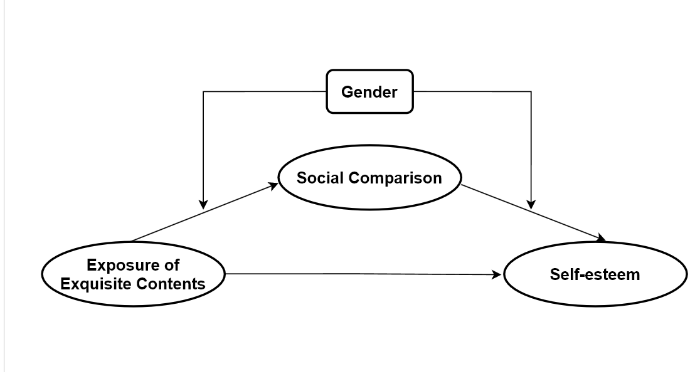Volume 115
Published on October 2025Volume title: Proceeding of ICIHCS 2025 Symposium: The Dialogue Between Tradition and Innovation in Language Learning
The fast emergence of AI usage in education has provoked huge discussions on the role AI is playing in teachers' careers and practices. Despite AI's field improvement and personalized learning, it is widely believed that this technology may provoke educational inequality, harm teachers' autonomy, and undermine the human aspect of the teaching process. The current investigation expounds on two clashing views regarding AI’s role in education by providing arguments of its dangers, such as algorithmic biased thinking and overreliance, and of its high capacity in vocational training and resource enhancement. With the help of a systematic literature review, the research integrates scholarly arguments and empirical evidence from key sources to draw a conclusion on the tensions between the use of technological tools and the educational process driven by values. It is discovered that AI's merits are overturned by its challenges, which include the "Matthew Effect" in the distribution of resources and the gradual loss of teachers' agency. The study reports a view suggesting that a balanced, symbiotic type of relationship, namely where AI approaches the standardized tasks behind a teacher's back while teachers focus more on guiding ethical practices and developing critical thinking among students, is necessary to curb AI's negative impact without losing the integrity of education. Suggestions include institutional measures against prejudices, digital competences incorporation into professional teacher training, and multilevel AI introduction strategies to replace human pedagogical functions.

 View pdf
View pdf



The Eight Auspicious Symbols constitute a foundational set of visual icons deeply embedded within Tibetan Buddhist culture. They serve as potent embodiments of core religious philosophy and express a distinctive ethnic aesthetic sensibility. This research employs a multidisciplinary methodology, drawing extensively upon relevant textual literature (including Buddhist scriptures and historical records), diverse historical documents, and ancient visual materials (such as thangkas, murals, and ritual objects), to trace the historical evolution and unpack the multifaceted symbolic meanings of these eight symbols. The study conducts a detailed formal analysis, scrutinizing their characteristic visual forms, specific color symbolism, and the profound significance implied by their compositional elements and traditional representations. This systematic examination rigorously delineates their essential artistic attributes, including their stylistic conventions, compositional principles, and patterns of decorative usage. Furthermore, the paper reveals the rich cultural connotations carried by the symbols, exploring their connection to fundamental Buddhist doctrines (like the Noble Eightfold Path and concepts of auspiciousness) and their role in reflecting Tibetan cultural values and worldview. Finally, the investigation delves into the unique aesthetic significance of the Ashtamangala, analyzing how their harmonious visual language, symbolic potency, and ritual context contribute to their enduring power and central place within the artistic and spiritual practices of Tibetan Buddhism.

 View pdf
View pdf


Artificial intelligence (AI) is increasingly prevalent in mental health services, enhancing accessibility by providing immediate support through chatbots and remote platforms, and improving efficiency through automated diagnostics and personalized treatment recommendations. However, this rapid integration also brings numerous ethical controversies, including concerns over data privacy, algorithmic bias, and the potential erosion of human empathy in therapeutic relationships. This paper focuses on seven core ethical issues in AI mental interventions, including privacy protection, informed transparency, fairness and bias, responsibility attribution, autonomy and agency, emotional dependency, and simulated empathy. Existing studies mostly address single dimensions and fail to respond to the multi-stakeholder collaborative ethical challenges. To address this, the paper proposes a “Layered Responsibility Framework” that systematically analyzes the division of responsibilities and ethical constraints across three levels: developers, platform operators, and users. The study highlights that only by promoting clear accountability, transparent design, and institutional coordination can society ensure the sustainable application of AI technology in mental health and safeguard users’ psychological safety.

 View pdf
View pdf


Test anxiety is a common problem among middle school students in the fiercely competitive academic atmosphere created by important exams like the National College Entrance Examination (Gaokao) and the Middle School Entrance Examination (Zhongkao). Test anxiety, as a common negative emotion, significantly affects students' mental health and academic performance in examinations. It is a widespread and profoundly impactful psychological issue. This paper reviews the research literature on the relationship between self-efficacy, psychological resilience, and test anxiety in middle school students. The results indicate that in middle school students, Self-efficacy (SE) is negatively correlated with TA, and Psychological Resilience (PR) is also negatively correlated with Test Anxiety (TA), suggesting they have a mitigating and predictive role in students' TA. Furthermore, there has been limited recent research on the impact of SE and PR on TA among university students, with most studies focusing on the middle school level. Therefore, investigating this impact on university students may become a future research trend.

 View pdf
View pdf


In a fast-paced and highly competitive society, teenagers are confronted with multiple pressures from academic studies, family, social interactions, and future career concerns, leading to frequent psychological problems. The ability of psychological self-regulation is crucial for them to cope with stress and maintain mental health. Parents' emotional expression, as an important influencing factor, has a mechanism of action that requires further exploration. This article focuses on the relationship between parents' emotional expression and teenagers' psychological self-regulation ability, comprehensively analyzes relevant research results, and explores the mechanism of action and influence between the two. The research finds that parents' positive emotional expression can create a good family atmosphere, provide teenagers with emotional learning models, promote the development of their psychological self-regulation ability, and help establish good peer relationships. Negative emotional expression interferes with teenagers' psychological regulation mechanisms and increases the risk of psychological problems. Family environment, parenting style, and negative life events jointly affect teenagers' mental health. The self-regulation theory and parents' emotional expression have a two-way interaction, and their practical strategies are complementary. In conclusion, parents' emotional expression has a significant impact on teenagers' psychological self-regulation ability. Parents should balance the cultivation of teenagers' self-control and the optimization of the family emotional environment, and enhance teenagers' ability to cope with stress through integrated intervention to build a long-term protection mechanism for teenagers' mental health.

 View pdf
View pdf


With severe repercussions that go well beyond infancy, childhood trauma is a major risk factor for teenage mental health. Adolescents are more susceptible to a variety of psychological issues as a result of these early negative experiences, which can interfere with appropriate emotional, cognitive, and social development. Furthermore, the effects of childhood trauma frequently last into adulthood, impacting general quality of life and long-term wellness. This study systematically explores childhood trauma, including abuse, neglect, and family dysfunction, and examines their pathways and underlying mechanisms influencing adolescent depression and well-being. It further analyzes how trauma contributes to distorted cognition, impaired emotional regulation, disrupted interpersonal relationships, and alterations in the biological stress response system. Additionally, the critical roles of protective factors, such as secure attachment, psychological resilience, and social support, are highlighted. Finally, trauma-informed, multi-level intervention strategies are proposed to provide a theoretical foundation for promoting adolescent mental health and to identify practical directions for implementation.

 View pdf
View pdf


Face recognition plays a vital role in human social interaction, which enables people to quickly identify others and form an impression in a few seconds. This paper focuses on the relationship between face recognition and implicit attitude, especially the way that instant judgment formed by facial features affects people's first impression. The study reviewed a series of recent experimental studies and meta-analysis, which explored the cognitive and judgment process behind face recognition. The methods discussed in this paper include rapid impression formation task and large-scale data survey, and pay attention to the strengths and limitations of these approaches, such as the diversity of samples and the challenge of measuring implicit processes. The results show that face recognition can strongly impact people's implicit bias and attitude, which often leads to helpful or harmful social judgments. Rapid evaluation based on appearance will reinforce stereotypes and lead to errors in trust or social evaluation, especially when identifying faces of different racial groups. The study concludes that understanding these unconscious recognition processes is essential for reducing prejudice and improving social harmony. By raising awareness about the risk of bias in face recognition and developing more targeted education and reflection, people can move towards more equitable and inclusive social interactions.

 View pdf
View pdf



Psychological well-being among international students has received increasing attention. Although some research has indicated a strong correlation between psychological adjustment and second language (L2) motivation, little is known about the links between L2 motivation, language use preference, and mental health. This study surveyed 178 international students and conducted correlation analysis, and mediation analysis. The findings demonstrated a negative correlation between depressed symptoms and the Ideal L2 Self, a subdimension of L2 motivation, and no mediating effect of language preference was observed between L2 motivation and depression. These findings suggest that a strong ideal self in L2 may provide psychological support for international students in multilingual contexts and help alleviate depressive tendencies, offering useful insights for cross-cultural mental health interventions in higher education. Future research could consider increasing the sample size and explore how learning motivation and language preference relate to various mental health indicators. These could offer deeper insights into the mechanisms of cross-cultural adaptation and psychological well-being.

 View pdf
View pdf


In an era of accelerating globalization, animated films increasingly serve as platforms for cross-cultural dialogue and identity negotiation. This paper investigates the role of music in constructing transcultural identities in the Kung Fu Panda film series, with a particular focus on its first installment. Drawing on Anahid Kassabian’s Hearing Film theory and Bhabha’s concept of cultural hybridity, the study explores how the film’s soundtrack functions as a narrative and cultural agent rather than merely a background element. Through close analysis of compositional techniques such as Mickey Mousing and the integration of Western orchestration with traditional Chinese instruments including erhu and pipa, this paper illustrates how Kung Fu Panda creates a sonic fusion that mediates global cultural meanings. The findings suggest that the music enhances emotional depth and comedic timing while bridging Eastern and Western aesthetics. However, the study is limited by the absence of empirical audience reception analysis. Future research could extend the investigation through comparative studies with other culturally hybrid animated films such as Mulan and Coco to better understand diverse musical strategies in globalized cinema.

 View pdf
View pdf



In recent years, browsing exquisite content, showcasing delicate makeup, and high-quality lifestyle and consumption patterns on the rednote platform have become the new trend among teenagers. However, users' mental health might be affected by exposure to ideal images and content of the rednote. The study examines the impact of exposure to exquisite contents in the rednote on the Chinese young generation's self-esteem, social comparison as the mediating variable, and gender as the moderating variable. 209 questionnaires were collected through Wenjuanxing and WeChat. Correlation, regression, and factor analysis were applied through SPSS and Process. The results show that exposure to exquisite content, social comparison (r=0.348, p<0.001), and self-esteem (r=0.320, p<0.001) are significantly correlated. It indicates that the impact of social comparison on the self-esteem of males is more prominent than that of females. This research contributes to addressing the existing gaps in the interaction mechanism of the content of online social media, social comparison, and self-esteem with gender as the moderator. It reveals the possible pathway from the content of social media to users' self-perception and social psychology. Further, it provides suggestions in terms of the operation mechanism of the online platform, social narrative, and education for the online social media user group.

 View pdf
View pdf



